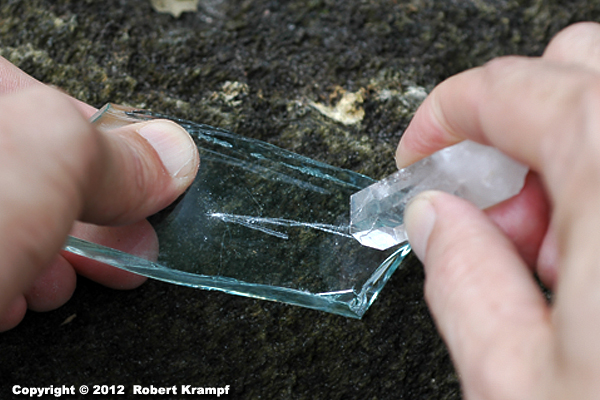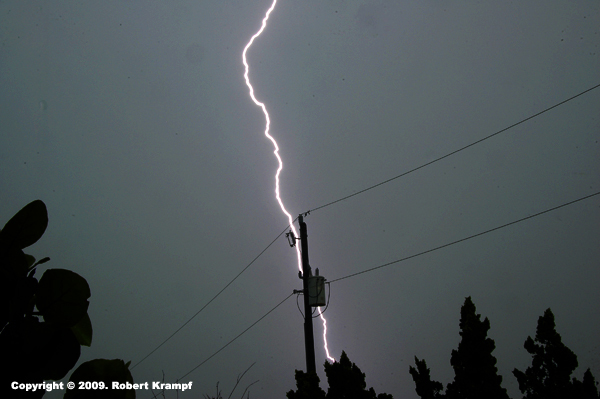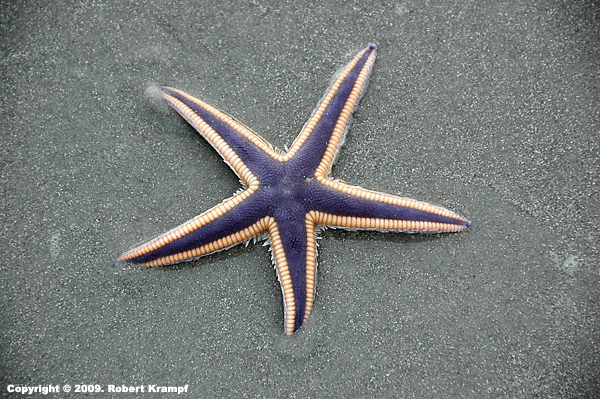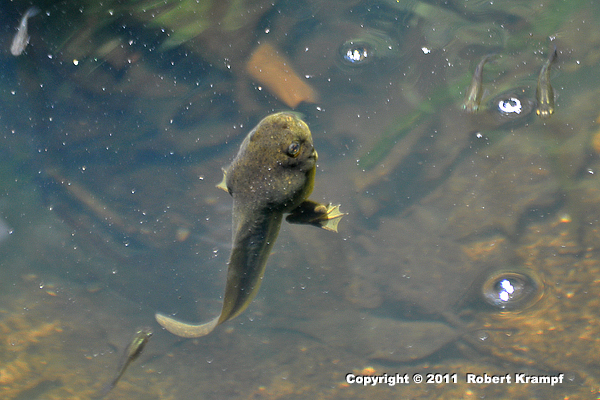Here are some science questions from the Standards for Grades 2-5 to help you test your knowledge of the Next Generation Sunshine State Standards.
The questions are chosen randomly, so this quest will be different each time you reload the page.
* Click here to see only the most recently added questions.

This is called Obsidian. It is formed from molten lava that cools so quickly that it forms a natural glass instead of crystals. What kind of rock is it?.
-
Igneous
Yes! Igneous rocks formed from magma or lava. This is an igneous rock. -
Sedimentary
No. Sedimentary rocks are deposited by wind, water, ice, or gravity, and they often contain fossils. This is not a sedimentary rock. -
Metamorphic
No. Metamorphic rocks have been changed by heat and pressure from a different kind of rock. Instead of being changed, this got hot enough to completely melt, so it is not metamorphic. -
Obsidian is not a rock.
No. Obsidian is a naturally occurring solid that forms large layers in the Earth. Obsidian is a rock.
Click to see which state standards this question tests, and which of my videos, experiments, and other resources support that topic.
Florida
SC.4.E.6.1 Identify the three categories of rocks: igneous, (formed from molten rock); sedimentary (pieces of other rocks and fossilized organisms); and metamorphic (formed from heat and pressure).
| Evaporites | video, learnalong, checked |
| Igneous Rocks and Bubbles | video, free, learnalong, Updated |
| Sedimentary Rocks | video, learnalong |
| What is a Rock? | video, learnalong, checked |
| Bioclastics: Rocks With No Minerals | video |
| Light and Dark Minerals | text page, learnalong |
| Homemade Fossil Dig | text page |
| Foliated and Unfoliated Rocks | text page, learnalong |
| Identifying Igneous Rocks | text page, learnalong |
| Intrusive and Extrusive Igneous Rocks | text page, learnalong |
| Review Rocks-2 | practice |
| Review Rocks-3 | practice |
| Review Rocks-4 | practice |
| Review Rocks-5 | practice |
| Review Rocks-6 | practice |
| Review Rocks-8 | practice |
| Review Rocks-9 | practice |
| Review Rocks-7 | practice |
| Review Rocks-10 | practice |
| Review Rocks-10 | practice |
| Review Rocks-10 | practice |
| Review Rocks-1 | practice |
SC.7.E.6.2 Identify the patterns within the rock cycle and relate them to surface events (weathering and erosion) and sub-surface events (plate tectonics and mountain building).
| Evaporites | video, learnalong, checked |
| What is a Rock? | video, learnalong, checked |
| The Rock Cycle | video, learnalong |
| Change: Fast and Slow | video |
| Erosion | video, checked |
| Continuous Change | video, checked |
| Bioclastics: Rocks With No Minerals | video |
| Weathering and Erosion | video, learnalong, checked |
| Review Erosion-4 | practice |
| Review Erosion-5 | practice |
| Review Rocks-4 | practice |
| Review Rocks-5 | practice |
| Review Rocks-6 | practice |
| Review Rocks-8 | practice |
| Review Rocks-9 | practice |
| Review Rocks-7 | practice |
| Review Rocks-10 | practice |
| Review Rocks-10 | practice |
| Review Rocks-1 | practice |
| Review Erosion-1 | practice |
| Review Erosion-2 | practice |
| Review Erosion-3 | practice |
Utah
UT.4.III.1.a Describe the differences between minerals and rocks.
| What is a Mineral? | video, checked |
| Identifying Minerals | video, learnalong |
| What is a Rock? | video, learnalong, checked |
| Bioclastics: Rocks With No Minerals | video |
| Definition of a Mineral | video, checked |
| Review Rocks-1 | practice |
| Review Rocks-4 | practice |
| Review Rocks-5 | practice |
| Review Rocks-6 | practice |
| Review Rocks-8 | practice |
| Review Rocks-9 | practice |
| Review Rocks-7 | practice |
| Review Rocks-10 | practice |
NGSS
4-ESS1-1 Identify evidence from patterns in rock formations and fossils in rock layers to support an explanation for changes in a landscape over time.
| Evaporites | video, learnalong, checked |
| Igneous Rocks and Bubbles | video, free, learnalong, Updated |
| Sedimentary Rocks | video, learnalong |
| Reading the Rocks: Law of Superposition | video |
| Reading the Rocks: Law of Crosscutting | video |
| What is a Rock? | video, learnalong, checked |
| Reading the Rocks: The Present is the Key to the Past | video, ClosedCaptions |
| Paleo Cookies | video |
| Homemade Fossil Dig | text page |
| Review Geologic Time-2 | practice |
| Review Rocks-5 | practice |
| Review Rocks-6 | practice |
| Review Rocks-8 | practice |
| Review Rocks-9 | practice |
| Review Rocks-7 | practice |
| Review Rocks-10 | practice |
| Review Geologic Time-3 | practice |
| Review Rocks-1 | practice |
| Review Geologic Time-1 | practice |
| Review Rocks-4 | practice |
MS-ESS2-1 Develop a model to describe the cycling of Earth’s materials and the flow of energy that drives this process.
| Evaporites | video, learnalong, checked |
| Definition of a Mineral | video, checked |
| Igneous Rocks and Bubbles | video, free, learnalong, Updated |
| What is a Mineral? | video, checked |
| Identifying Minerals | video, learnalong |
| Sedimentary Rocks | video, learnalong |
| What is a Rock? | video, learnalong, checked |
| The Rock Cycle | video, learnalong |
| Bioclastics: Rocks With No Minerals | video |
| Light and Dark Minerals | text page, learnalong |
| Review Rocks-2 | practice |
| Review Rocks-3 | practice |
| Review Rocks-4 | practice |
| Review Rocks-5 | practice |
| Review Rocks-6 | practice |
| Review Rocks-8 | practice |
| Review Rocks-9 | practice |
| Review Rocks-7 | practice |
| Review Rocks-10 | practice |
| Review Rocks-10 | practice |
| Review Rocks-10 | practice |
| Review Rocks-1 | practice |

In testing this piece of quartz, I found that it would scratch glass. What property was I testing?
-
Hardness
Yes! Hardness is a substance's resistance to being scratched. With a hardness of 7, quartz is hard enough to scratch glass. -
Cleavage
No. Cleavage is the tendency of a mineral to break along planes of weakness to produce pieces with flat, smooth sides. Cleavage involves breaking, not scratching. -
Fracture
No. Fracture is a property of minerals that do NOT break along planes of weakness to produce flat, smooth sides. This involves breaking, not scratching. -
Streak
No. Streak is a test to see the color of a mineral when it is ground into a powder by scratching it on a porcelain streak plate. For streak, we are powdering the mineral, not scratching another substance.
Click to see which state standards this question tests, and which of my videos, experiments, and other resources support that topic.
Florida
SC.4.E.6.2 Identify the physical properties of common earth-forming minerals, including hardness, color, luster, cleavage, and streak color, and recognize the role of minerals in the formation of rocks.
| What is a Mineral? | video, checked |
| Identifying Minerals | video, learnalong |
| Definition of a Mineral | video, checked |
| Minerals Around You | text page, learnalong, checked |
| Review Minerals-1 | practice |
| Review Minerals-2 | practice |
| Review Minerals-3 | practice |
| Review Minerals-4 | practice |
| Review Minerals-5 | practice |
| Review Minerals-6 | practice |
| Review Minerals-7 | practice |
| Review Minerals-8 | practice |
Utah
UT.8.III.1.b Observe and describe the minerals found in rocks (e.g., shape, color, luster, texture, hardness).
| What is a Mineral? | video, checked |
| Identifying Minerals | video, learnalong |
| What is a Rock? | video, learnalong, checked |
| Definition of a Mineral | video, checked |
| Review Minerals-1 | practice |
| Review Minerals-2 | practice |
| Review Minerals-3 | practice |
| Review Minerals-4 | practice |
| Review Minerals-5 | practice |
| Review Minerals-6 | practice |
| Review Minerals-7 | practice |
| Review Minerals-8 | practice |
NGSS

When this traffic jam starts moving, the cars will be able to speed up faster than the big trucks. Why?
-
The cars have more powerful engines.
No. The trucks have more powerful engines than the cars do. -
The cars have tires with more friction.
No. The truck tires are larger, which means they have more contact with the ground, and more friction. -
The cars weigh less.
Yes! The heavier an object is (the more mass it has), the more force it takes to move it. The trucks weigh a lot more than the cars, so it takes much more energy to get them moving. -
The cars are more streamlined
No. A streamlined shape helps when the cars are moving quickly, but does not do much as they are starting up.
Click to see which state standards this question tests, and which of my videos, experiments, and other resources support that topic.
Florida
SC.5.P.13.3 Investigate and describe that the more mass an object has, the less effect a given force will have on the object's motion.
| The Difference Between Weight and Mass | video, checked |
| Water in a Glass, part 2 | video, checked |
| Water in a Glass, part 3 | video, checked |
| Water in a Glass, part 1 | video, checked |
| Obedient Coin | video, checked |
| Wrong Way Balloon | video, checked |
| High Bounce | video, checked |
| Review Force and Motion-1 | practice |
| Review Force and Motion-2 | practice |
Utah
UT.3.III.2.b Compare and chart the relative effects of a force of the same strength on objects of different weight (e.g., the breeze from a fan will move a piece of paper but may not move a piece of cardboard).
| Floating Cups | video, checked |
| Water in a Glass, part 2 | video, checked |
| Water in a Glass, part 3 | video, checked |
| Water in a Glass, part 1 | video, checked |
| High Bounce | video, checked |
| Review Force and Motion-1 | practice |
| Review Force and Motion-2 | practice |
NGSS
MS-PS2-2 Plan an investigation to provide evidence that the change in an object’s motion depends on the sum of the forces on the object and the mass of the object.
| Strange Flame, part 1 | video, checked |
| Science Friction | video, checked |
| Raw Egg or Boiled? | video, checked |
| More Science of Balance | video, checked |
| Science of Balance | video, checked |
| Bernoulli Effect | video |
| The Old Tablecloth Trick | video |
| Smoke Rings | video |
| Floating Cups | video, checked |
| The Difference Between Weight and Mass | video, checked |
| Torque | video |
| Water in a Glass, part 2 | video, checked |
| Water in a Glass, part 3 | video, checked |
| Water in a Glass, part 1 | video, checked |
| Newton's First Law of Motion | video, ClosedCaptions |
| Obedient Coin | video, checked |
| Wrong Way Balloon | video, checked |
| Strange Flame, part 2 | video, checked |
| Balancing a Meter Stick | text page |
| Review Force and Motion-1 | practice |
| Review Force and Motion-2 | practice |
| Review Force and Motion-4 | practice |

A lightning bolt has a huge amount of energy. Which of these kinds of energy is NOT a major component of lightning?
-
Heat
No. A lightning bolt can heat the air to over 30,000 °C (54,000 °F) -
Electrical
No. A lightning bolt has a tremendous amount of electrical energy, often several hundred million volts, and several hundred thousand amperes. -
Sound
No. Thunder, the sound energy produced by a lightning bolt, is so loud that it can often be heard up to ten miles away. -
Chemical
Yes. While a lightning bolt can cause chemical changes, very little of the bolt's energy is converted to chemical energy.
Click to see which state standards this question tests, and which of my videos, experiments, and other resources support that topic.
Florida
SC.3.P.10.1 Observe and describe some basic forms of energy, including light, heat, sound, electrical, and the energy of motion.
| Electrostatic Charges | video |
| Noisy String | video, checked |
| Spoon Bells | video, checked |
| Making a Screamer | video, free, Updated |
| The Singing Glass | video, checked |
| Whistle Stick | video, text page, blog, free, checked |
| Review Energy-5 | quest |
| Review Energy-2 | practice |
SC.4.P.10.1 Observe and describe some basic forms of energy, including light, heat, sound, electrical, and the energy of motion.
| Measuring Kinetic and Potential Energy | video, checked |
| Electrostatic Charges | video |
| Why Things Go Bang | video |
| Noisy String | video, checked |
| Spoon Bells | video, checked |
| The Singing Glass | video, checked |
| Radioactive | video, Updated, checked |
| Electricity | video, free, Updated |
| Measuring Calories | video, ClosedCaptions, checked |
| Bean Power | text page |
| Calories: Measuring the Energy | text page, free |
| Review Energy-5 | quest |
| Review Energy-2 | practice |
SC.5.P.10.1 Investigate and describe some basic forms of energy, including light, heat, sound, electrical, chemical, and mechanical.
| The Science of Pizza | video, checked |
| Measuring Calories | video, ClosedCaptions, checked |
| Measuring Kinetic and Potential Energy | video, checked |
| Solar Power | video, checked |
| Why Things Go Bang | video |
| Sunglass Science: Birefringence | video, free, Updated |
| Noisy String | video, checked |
| Spoon Bells | video, checked |
| Making a Screamer | video, free, Updated |
| The Singing Glass | video, checked |
| Radioactive | video, Updated, checked |
| Electricity | video, free, Updated |
| Calories: Measuring the Energy | text page, free |
| Review Energy-5 | quest |
| Review Energy-2 | practice |
Utah
UT.8.IV.4.b Trace the conversion of energy from one form of energy to another (e.g., light to chemical to mechanical).
| Measuring Kinetic and Potential Energy | video, checked |
| The Rollback Can | video, free, Updated |
| High Bounce | video, checked |
NGSS
4-PS3-2 Make observations to provide evidence that energy can be transferred from place to place by sound, light, heat, and electric currents.
| The Singing Glass | video, checked |
| Electricity | video, free, Updated |
| The Science of Pizza | video, checked |
| Heating a Balloon | video, ClosedCaptions, checked |
| Simple Circuits | video, checked |
| Doppler Effect | video, checked |
| How Heat Moves | video, checked |
| Solar Power | video, checked |
| Bottle Tones, part 1 | video, checked |
| Bottle Tones, part 2 | video, checked |
| Why Things Go Bang | video |
| Noisy String | video, checked |
| Spoon Bells | video, checked |
| Making a Screamer | video, free, Updated |
| A Real Tuning Fork | text page |
| Comparing How Sound Moves Through Liquids and Gases | text page |
| Review Energy-2 | practice |
Which of the following is a vertebrate?




-
A: crab
No. Crabs have an exoskeleton. They are arthropods, which are invertebrates. -
B: starfish
No. Starfish do not have a vertebral column or a notochord. They are echinoderms, which are invertebrates. -
C: fly
No. Flies have an exoskeleton. They are insects, which are invertebrates. -
D: tadpole
Yes! Tadpoles are amphibians. They have an internal skeleton, which includes a vertebral column. They are vertebrates.
Click to see which state standards this question tests, and which of my videos, experiments, and other resources support that topic.
Florida
SC.3.L.15.1 Classify animals into major groups (mammals, birds, reptiles, amphibians, fish, arthropods, vertebrates and invertebrates, those having live births and those which lay eggs) according to their physical characteristics and behaviors.
| Feathers | video, checked |
| A Walk in the Park | video, checked |
| Scientific Names | video, ClosedCaptions |
| Review Classify-2 | practice |
| Review Classify-1 | practice |
| Review Classify-3 | practice |
SC.6.L.15.1 Analyze and describe how and why organisms are classified according to shared characteristics with emphasis on the Linnaean system combined with the concept of Domains.
| Scientific Names | video, ClosedCaptions |
| Review Classify-2 | practice |
| Review Classify-1 | practice |
| Review Classify-3 | practice |
Utah
UT.4.V.3.b Use a simple classification system to classify unfamiliar Utah plants or animals (e.g., fish/amphibians/reptile/bird/mammal, invertebrate/vertebrate, tree/shrub/grass, deciduous/conifers).
| A Walk in the Park | video, checked |
| Scientific Names | video, ClosedCaptions |
| Review Classify-2 | practice |
| Review Classify-1 | practice |
| Review Classify-3 | practice |
UT.7.V.2.c Generalize rules for classification.
| Scientific Names | video, ClosedCaptions |
| Review Classify-2 | practice |
| Review Classify-1 | practice |
| Review Classify-3 | practice |
